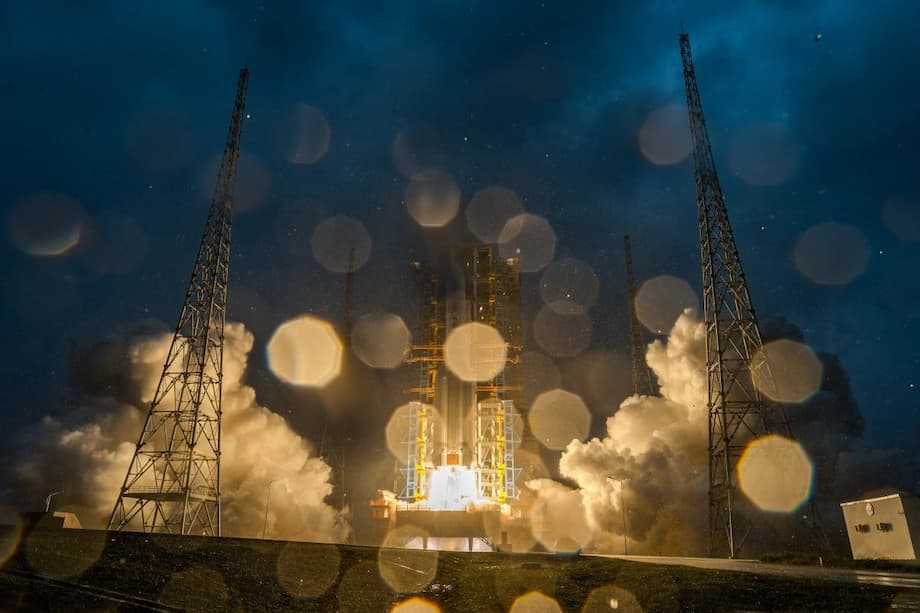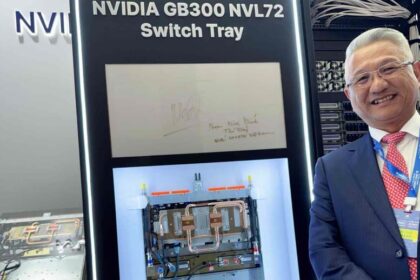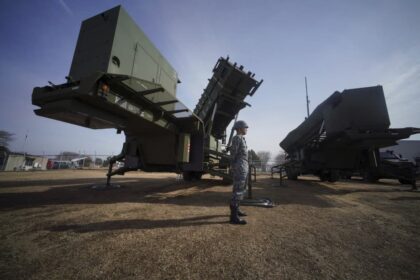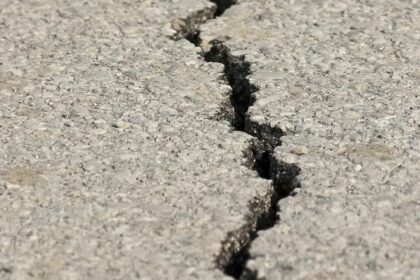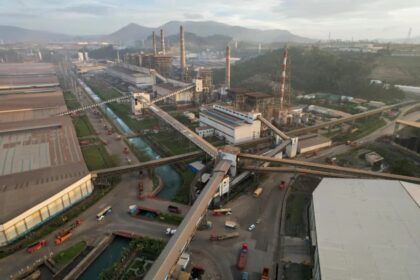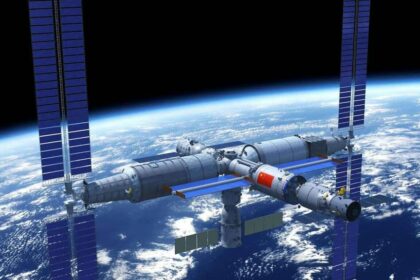China’s Chang’e-6 Moon Mission: When Science Meets Sovereignty
In May 2024, China’s Chang’e-6 spacecraft made history by returning the world’s first lunar samples from the far side of the moon. Yet, behind this scientific milestone lay a subtle but significant geopolitical maneuver: Chinese engineers deliberately altered the mission’s trajectory to avoid dropping rocket debris in waters claimed by the Philippines. This adjustment, revealed in a recent scientific paper and confirmed by multiple sources, underscores how space exploration is increasingly entangled with Earth-bound territorial disputes and diplomatic sensitivities.
Why Did China Change Its Moon Mission Trajectory?
The Chang’e-6 mission launched from the Wenchang Space Launch Site on Hainan Island, riding atop a Long March-5 rocket. Traditionally, rockets are launched eastward over the ocean to maximize efficiency and minimize risk to populated areas. However, the original flight path for Chang’e-6 would have resulted in rocket debris splashing down off the east coast of Luzon, the Philippines’ largest and most populous island—an area Manila considers part of its exclusive economic zone (EEZ).
According to a paper published in China’s Journal of Astronautics, mission engineers delayed the release of the rocket’s nose cone by several dozen seconds. This seemingly minor adjustment nudged the debris drop zone further into the Philippine Sea, away from waters claimed by the Philippines. The mission’s deputy chief designer, Wang Qiong, and his team wrote:
In response to new domestic regulations and evolving claims over foreign territorial sea baselines, we fine-tuned the launch trajectory timing.
While the paper did not explicitly name the Philippines, the accompanying map and context made the target of the adjustment clear. The move was a direct response to Manila’s growing assertiveness over its maritime boundaries and concerns about foreign rocket debris landing in its waters.
Philippine Concerns Over Space Debris
The Philippines has repeatedly raised alarms about Chinese rocket launches, especially when debris is projected to fall within or near its EEZ. In recent years, provinces like Palawan and Basilan have been placed on high alert during Chinese launches, with the Philippine Space Agency (PhilSA) issuing advisories about potential risks to ships, fishing vessels, and aircraft. President Ferdinand Marcos Jr. has publicly called on China to provide earlier warnings about rocket launches, emphasizing the need for transparency and safety:
We just want to know where the debris will land so we can collect it and return it to China. There’s no need for China to seize debris from us—we’re willing to cooperate, but we need timely information.
These concerns are not unfounded. Rockets are typically launched over water to minimize risk, but the Philippines’ location southeast of China makes it a frequent recipient of falling rocket stages. While no major incidents have occurred, the potential for harm to people, property, and the environment remains a source of tension.
Space Exploration in a Geopolitical World
The Chang’e-6 adjustment is more than a technical footnote—it’s a case study in how space missions are shaped by terrestrial politics. As more countries develop space programs and launch capabilities, the intersection of science, sovereignty, and diplomacy becomes increasingly complex.
The Philippines’ Growing Space Ambitions
Though not yet a major spacefaring nation, the Philippines has steadily expanded its space program. The Philippine Space Agency (PhilSA), established in 2019, coordinates satellite launches, disaster monitoring, and space science education. Filipino engineers have developed and launched microsatellites like Diwata-1 and Diwata-2, often in partnership with Japan and other international agencies. While the country does not yet have its own launch site, proposals for a spaceport in Mindanao are under consideration.
For the Philippines, space is not just about exploration—it’s about asserting sovereignty, protecting resources, and ensuring national security. The country’s experience with foreign rocket debris has heightened its awareness of the need for clear rules and communication in the increasingly crowded domain of near-Earth space.
China’s Expanding Space Program and Strategic Calculations
China’s lunar ambitions are part of a broader strategy to establish itself as a global space power. The Chang’e missions, including the recent Chang’e-6 and the upcoming Chang’e-7, are designed to demonstrate technological prowess, gather scientific data, and lay the groundwork for future lunar bases. China is also collaborating with Russia on the International Lunar Research Station (ILRS), aiming to create a permanent research outpost on the moon by the 2030s.
Beyond the moon, China is investing heavily in satellite constellations (such as the Guowang project), asteroid exploration (Tianwen-2), and advanced space infrastructure. These efforts are not just about science—they are about securing resources, projecting influence, and competing with the United States and its allies in the new space race.
International Law, Diplomacy, and the New Space Race
The Chang’e-6 trajectory adjustment highlights the growing importance of international law and diplomacy in space activities. Under the United Nations Convention on the Law of the Sea (UNCLOS), countries have rights over their EEZs, extending 200 nautical miles from their coastlines. While outer space is governed by separate treaties, the overlap between airspace, maritime zones, and space launch corridors creates legal gray areas.
In this case, the Philippines asserted its rights over its EEZ and issued a diplomatic protest, prompting China to alter its mission plan. This episode demonstrates how even the most advanced space missions must navigate the realities of international relations and national interests.
Gray-Zone Tactics and Space Security
Some analysts see China’s approach as part of a broader “gray-zone” strategy—using non-military means to assert influence and test boundaries without triggering open conflict. In the South China Sea, this has included building artificial islands and deploying coast guard vessels. In space, it can mean adjusting trajectories, deploying maneuverable satellites, or conducting ambiguous activities that keep rivals off balance.
Holmes Liao of the Taiwan Space Agency noted at a recent conference:
China’s recent space activities could be rehearsals for future space operations, including the use of satellites as space weapons or to pressure other nations into accepting Beijing’s definitions of normal space behavior.
For countries like the Philippines, Japan, and Taiwan, these tactics require constant vigilance, investment in space situational awareness, and diplomatic engagement to protect their interests.
Broader Implications: Science, Safety, and Sovereignty
The Chang’e-6 mission’s trajectory change is a microcosm of larger trends in global space activity:
- Scientific Collaboration vs. National Rivalry: While space exploration offers opportunities for international cooperation, it is also a stage for competition and the assertion of national prestige.
- Safety and Environmental Concerns: Rocket debris poses risks to people, property, and the environment, especially in densely populated or heavily trafficked maritime regions. Clear communication and coordination are essential to minimize these risks.
- Legal and Diplomatic Challenges: As more countries launch satellites and probes, the need for updated rules and protocols becomes urgent. Existing treaties may not fully address the complexities of modern space activities, especially when they intersect with airspace and maritime claims.
- Emerging Space Powers: Countries like the Philippines are becoming more active in space, both as participants and as stakeholders with legitimate concerns about how space activities affect their interests on Earth.
What Happens Next?
China’s willingness to adjust its mission in response to Philippine concerns may set a precedent for future space launches in contested regions. It also signals that diplomatic engagement can yield practical results, even in the high-stakes arena of space exploration.
For the Philippines, the episode is a reminder of the importance of building its own space capabilities, strengthening international partnerships, and advocating for its rights in global forums. For China, it is a lesson in the need to balance scientific ambition with diplomatic sensitivity, especially as its space program becomes more ambitious and visible.
In Summary
- China’s Chang’e-6 moon mission altered its trajectory to avoid dropping rocket debris in waters claimed by the Philippines, reflecting the intersection of science and geopolitics.
- The adjustment was prompted by Philippine concerns over sovereignty and safety, and was confirmed in a scientific paper by Chinese engineers.
- The Philippines has a growing space program and is increasingly assertive about its rights in space and maritime domains.
- China’s expanding space ambitions are part of a broader strategy to compete globally and secure strategic advantages.
- This incident highlights the need for clear rules, communication, and diplomacy as more countries engage in space exploration.


